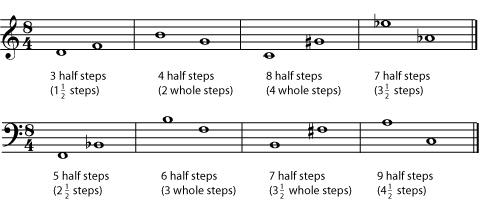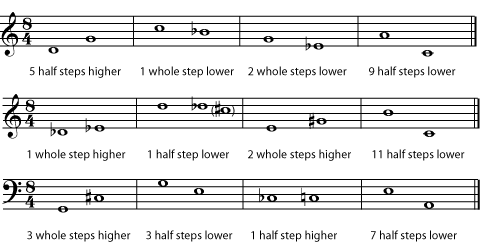| << Chapter < Page | Chapter >> Page > |
The pitch of a note is how high or low it sounds. Musicians often find it useful to talk about how much higher or lower one note is than another. This distance between two pitches is called the interval between them. In Western music , the small interval from one note to the next closest note higher or lower is called a half step or semi-tone .


Listen to the half steps in [link] .
The intervals in [link] look different on a staff ; sometimes they are on the same line, sometimes not. But it is clear at the keyboard that in each case there is no note in between them.
So a scale that goes up or down by half steps, a chromatic scale , plays all the notes on both the white and black keys of a piano. It also plays all the notes easily available on most Western instruments. (A few instruments, like trombone and violin , can easily play pitches that aren't in the chromatic scale, but even they usually don't.)

Listen to a chromatic scale.
If you go up or down two half steps from one note to another, then those notes are a whole step , or whole tone apart.


A whole tone scale , a scale made only of whole steps, sounds very different from a chromatic scale.

Listen to a whole tone scale.
You can count any number of whole steps or half steps between notes; just remember to count all sharp or flat notes (the black keys on a keyboard) as well as all the natural notes (the white keys) that are in between.
The interval between C and the F above it is 5 half steps, or two and a half steps.

Identify the intervals below in terms of half steps and whole steps. If you have trouble keeping track of the notes, use a piano keyboard, a written chromatic scale, or the chromatic fingerings for your instrument to count half steps.


Fill in the second note of the interval indicated in each measure. If you need staff paper for this exercise, you can print out this staff paper PDF file.



Notification Switch
Would you like to follow the 'Introduction to music theory' conversation and receive update notifications?